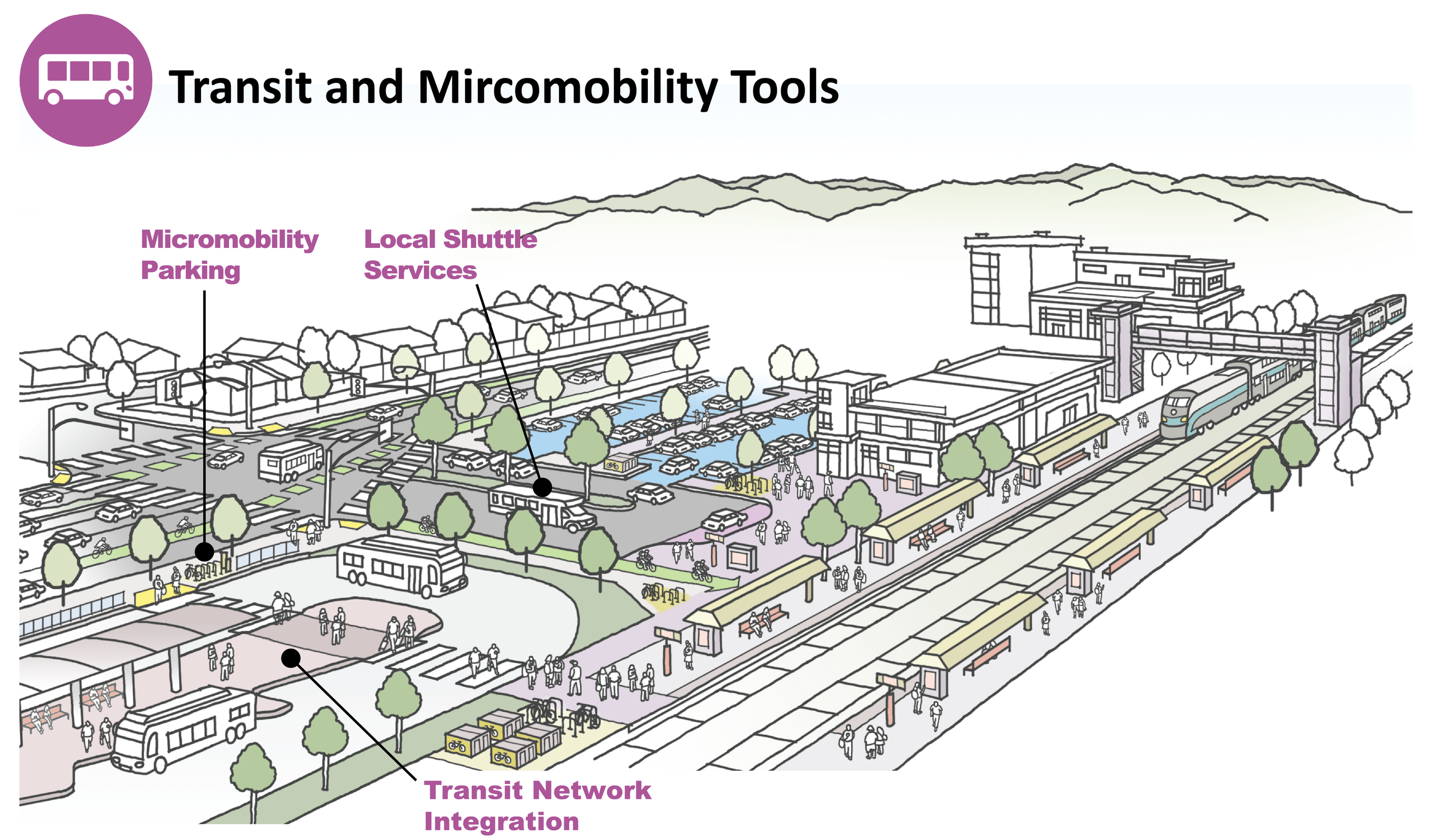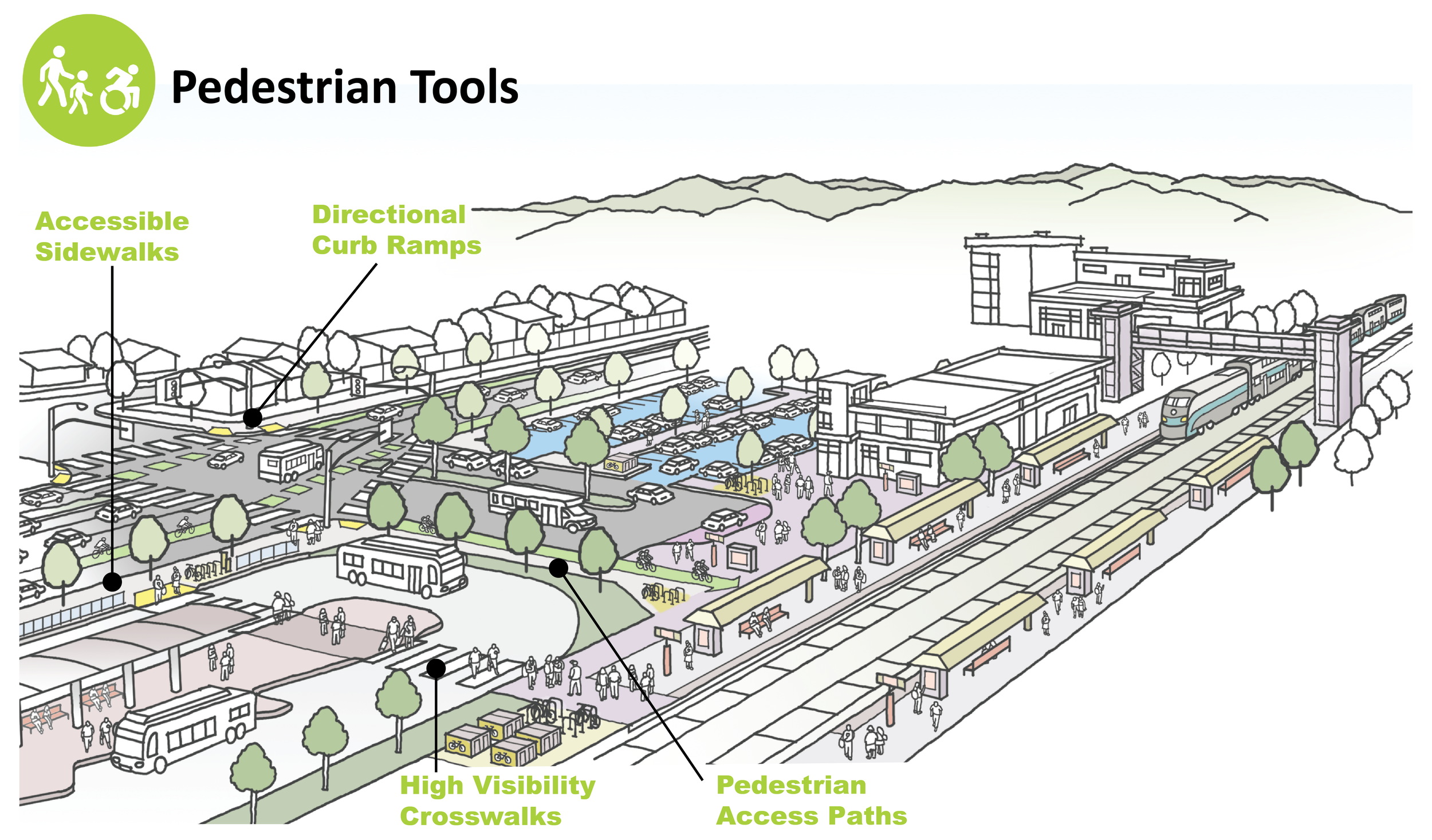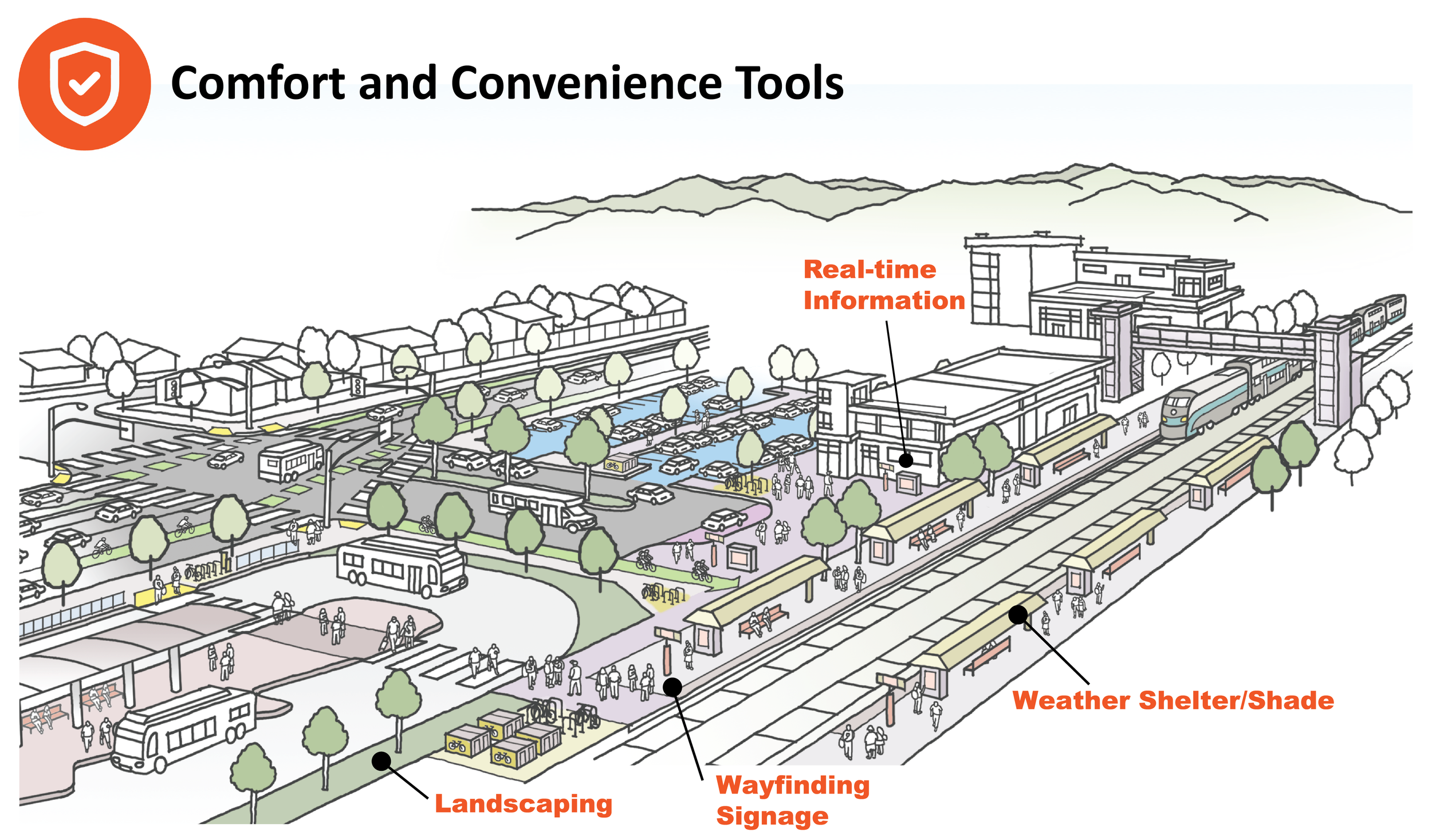METROLINK PLANNING Projects
TEAM MEMBERS
Cityworks Design
Arcadis – IBI Group
Mott MacDonald (Prime)
TEAM MEMBERS
Cityworks Design
Mott MacDonald (Prime)
Cityworks Design has collaborated with prime contractors to service Metrolink (Southern California Regional Rail Authority) by providing technical support on several planning projects. In 2021, CWD led the development of the Pomona Valley Nexus Study, which identified improvements geared towards economic growth along a segment of Metrolink's San Bernardino Line corridor. In 2023, CWD led the development of a First/Last Mile Toolkit for the Station Planning and Connectivity Enhancement Implementation Plan. Currently, CWD is leading the development of a strategic framework for Metrolink as they prepare for the 2028 Olympic and Paralympic Games.
First/Last Mile Toolkit
Cityworks Design developed a Station Connectivity Toolkit for the Metrolink Station Planning and Connectivity Enhancement Implementation Plan (June 2023). The plan was developed in cooperation with the California Department of Transportation (Caltrans) to identify and propose recommendations to remove barriers to accessing Metrolink stations through integrated strategies and pilot projects. The toolkit provides Metrolink’s partners with a clear framework for implementing First/Last Mile (FLM) tools at stations across the Metrolink system that will support transit ridership, safer travel, and reduce auto dependency.
Nexus Study
Cityworks Design developed a Nexus Strategies Memo that provides a “road map” to link transit and economic development along the Pomona Valley. The Memo was a component of the larger Metrolink Pomona Valley Study that identified specific improvements to Metrolink’s systems based on market segments and planned economic development in the Pomona Valley. Five San Bernadino Line stations were considered: Rancho Cucamonga, Upland, Montclair, Claremont and Pomona North. Each station was evaluated in terms of regional goals for aligning land use plans/policies with transportation objectives, including steps Metrolink could pursue to maintain and grow their regional rail services. Development of the Memo allowed Metrolink and the Pomona Valley cities to refocus local strategies, work towards achieving local economic development goals, and hopefully realize the Valley’s full potential when land use designations and transportation choices are indelibly tied.








